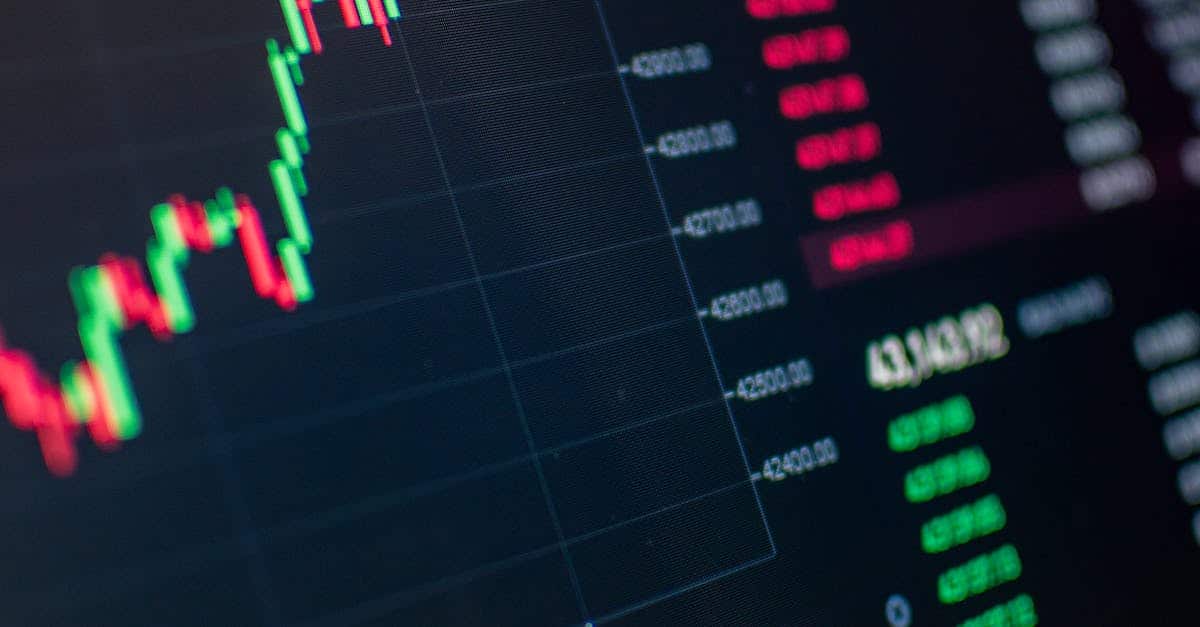Bitcoin Futures Traders Refuse to Capitulate Even as BTC Price Drops to $89K: A Deep Dive into Market Resilience and Digital Asset Maturity
Key Takeaways
- Bitcoin futures traders are demonstrating remarkable stability, refusing to capitulate despite BTC’s price dropping to $89,000, signaling a potential shift in market psychology.
- This non-capitulation suggests a growing presence of sophisticated institutional investors with longer investment horizons and robust risk management strategies.
- The resilience in derivatives markets indicates increased market maturity, offering businesses enhanced capabilities for financial innovation, hedging, and predictable digital asset operations.
- The stability is a positive indicator for the broader Web3 ecosystem, fostering an environment for deeper blockchain integration and more robust DeFi, NFT, and Metaverse developments.
- This event could signify a more mature market cycle for Bitcoin, leading to more sustainable growth, increased institutional confidence, and paving the way for broader corporate and retail adoption.
Table of Contents
- Decoding Market Capitulation and Its Absence
- The Role of Bitcoin Futures in Price Discovery and Market Stability
- Connecting Market Resilience to Business Efficiency and Digital Transformation
- The Broader Context: Web3 Developments and Regulatory Landscape
- What Does This Resilience Portend for Bitcoin’s Future?
- Frequently Asked Questions
- Conclusion: The New Era of Digital Asset Markets
The cryptocurrency market, long synonymous with wild fluctuations and unpredictable shifts, often presents a paradox to traditional investors. Yet, beneath the surface of dramatic price movements, sophisticated financial instruments are signaling a profound maturation. A recent development highlights this emerging resilience: Bitcoin futures traders refusing to capitulate even as BTC price drops to $89K. This phenomenon, where Bitcoin derivatives remain remarkably stable despite a significant price correction, offers a compelling narrative about the evolving psychology and structural strength of the digital asset landscape. It prompts a crucial question: Is the futures market’s steadfastness an early hint that savvy traders and institutions anticipate a price reversal, or at least a stable floor, rather than a prolonged downturn?
For business professionals, entrepreneurs, and crypto enthusiasts, understanding the nuances of such market behavior is paramount. It’s not merely about predicting price movements, but about discerning the underlying shifts in market participant behavior, the integration of traditional financial mechanisms into the crypto space, and the broader implications for financial innovation and digital transformation. This deep dive will unravel the significance of non-capitulation in the Bitcoin futures market, explore what this means for market maturity, and connect these trends to the wider business and Web3 ecosystem.
Decoding Market Capitulation and Its Absence
To appreciate the significance of futures traders refusing to capitulate, we must first understand what “capitulation” means in financial markets. Capitulation refers to a phase where investors, exhausted by sustained losses and convinced that prices will fall further, give up on their positions, often selling at significant losses. This widespread panic selling typically marks the bottom of a market cycle, as all weak hands have exited, leaving only conviction holders. In the volatile world of cryptocurrencies, capitulation events have historically been sharp and severe, often characterized by rapid price declines, massive liquidations in derivatives markets, and a pervasive sense of despair among participants.
The observed resilience, as BTC revisits the $89,000 level, starkly contrasts this historical pattern. Instead of a cascade of liquidations and a flight to safety, the Bitcoin derivatives market, particularly futures, has maintained a notable level of stability. This suggests that a significant portion of market participants, especially those engaged in more complex strategies through futures contracts, are not panicking. They are either holding their positions with conviction, actively rebalancing, or even accumulating, signaling a belief that the current price point does not represent an impending catastrophe but potentially a temporary dip or even a buying opportunity.
Expert Take: Market Sentiment Shift
“The steadfastness in Bitcoin futures during a notable price dip is a powerful indicator that the market’s psychological foundation is evolving. It suggests a significant portion of professional traders and institutions view these pullbacks as transient, not terminal, reflecting a growing long-term conviction in Bitcoin’s value proposition rather than speculative short-term trading.” – Cryptocurrency Market Analyst
The Role of Bitcoin Futures in Price Discovery and Market Stability
Bitcoin futures contracts are financial derivatives that allow traders to speculate on the future price of Bitcoin without owning the underlying asset. They are crucial for several reasons:
- Price Discovery: Futures markets offer a forward-looking perspective on price expectations, often influencing the spot market.
- Hedging: Businesses and investors can use futures to hedge against price volatility, mitigating risk in their Bitcoin holdings or operations.
- Arbitrage: Futures create opportunities for arbitrage, linking various markets and contributing to overall market efficiency.
- Institutional Participation: Regulated Bitcoin futures, such as those offered by the CME Group, have been instrumental in attracting institutional investors who require regulated, traditional financial instruments to engage with digital assets.
The stability in these derivatives markets, despite a significant spot price drop to $89,000, is a critical signal. It implies that the sophisticated players in the market are not exhibiting the fear and capitulation typically associated with such price corrections. This could be due to several factors:
- Increased Institutional Participation: Institutions often have longer investment horizons and more robust risk management strategies than retail traders. Their presence in the futures market could be providing a stabilizing force.
- Sophisticated Hedging Strategies: Many entities might be using futures to hedge existing Bitcoin holdings or exposure, meaning a price drop simply triggers their existing hedging mechanisms rather than initiating panic sales.
- Accumulation at Lower Prices: Experienced traders and long-term investors might view the price drop as an opportunity to buy Bitcoin at a discount, using futures to express their bullish sentiment or even to gain leveraged exposure.
- Maturing Market Infrastructure: The underlying infrastructure supporting derivatives trading has become more robust, offering better liquidity and less susceptibility to cascading liquidations, which were common in earlier market cycles.
Expert Take: Institutional Influence
“The resilience observed in Bitcoin futures markets strongly hints at the deepening involvement of institutional capital. These entities typically employ more sophisticated strategies for risk management and long-term value accumulation, which fundamentally changes the dynamics of market reactions to price volatility.” – Head of Digital Asset Strategy at a Global Investment Firm
Connecting Market Resilience to Business Efficiency and Digital Transformation
For business professionals and entrepreneurs, the stability observed in Bitcoin derivatives is not just an academic curiosity; it has profound implications for leveraging blockchain solutions and digital assets.
Financial Innovation and Risk Management
The ability of the Bitcoin futures market to withstand significant price pressure without capitulation underscores the ongoing financial innovation within the digital asset space. Businesses, particularly those with exposure to cryptocurrencies – be it through payment processing, asset management, or Web3 product development – can increasingly rely on these robust derivatives markets for sophisticated risk management.
- Hedging Revenue Streams: Companies accepting Bitcoin for goods or services can use futures to lock in exchange rates, protecting against adverse price movements between transaction and settlement. This brings a new level of predictability to revenue streams previously exposed to high volatility.
- Managing Treasury Assets: Corporations holding Bitcoin as part of their treasury strategy can utilize futures to hedge their balance sheet exposure, demonstrating a more mature approach to digital asset management. This is crucial for attracting mainstream corporate adoption.
- Structured Products Development: The stability enables the creation of more complex structured financial products built on crypto assets, catering to diverse investor needs and further integrating digital assets into traditional finance.
Digital Transformation and Operational Optimization
The growing maturity of crypto markets, as evidenced by stable derivatives, directly contributes to broader digital transformation initiatives.
- Predictable Digital Asset Operations: As markets become more resilient, businesses can better plan and optimize operations that involve digital assets. For instance, companies involved in mining or staking can forecast revenues with greater confidence if the underlying asset’s market behavior is more predictable.
- Blockchain Integration: The stability fosters an environment where blockchain technology can be integrated more deeply into supply chains, logistics, and data management. When the value of native tokens (like BTC as a store of value) is perceived as more stable, the incentive to build robust Web3 applications on underlying blockchain infrastructure increases.
- Enhanced Payment Systems: For businesses looking to optimize cross-border payments or introduce new digital payment rails, a less volatile underlying asset reduces operational risks and makes these solutions more attractive. The predictability allows for better treasury management and reduced FX risk for international transactions conducted in crypto.
Expert Take: Strategic Business Implications
“The non-capitulation in futures markets represents a turning point for corporate adoption of digital assets. It translates directly into enhanced risk management capabilities for businesses engaging with crypto, paving the way for more predictable operations, innovative financial product development, and accelerated digital transformation strategies across various sectors.” – Chief Financial Officer, Tech Unicorn
The Broader Context: Web3 Developments and Regulatory Landscape
The resilience in Bitcoin derivatives isn’t isolated; it’s part of a larger trend toward the maturation of the entire Web3 ecosystem.
- DeFi’s Role: Decentralized Finance (DeFi) platforms, while distinct from centralized futures exchanges, also contribute to market liquidity and offer alternative avenues for hedging and yield generation. The growth of DeFi reflects a broader demand for innovative financial services built on blockchain, benefiting from and contributing to the overall stability of core assets like Bitcoin.
- NFTs and Metaverse: While seemingly distant, the stability of foundational cryptocurrencies like Bitcoin provides a more solid bedrock for the development and value accrual within the NFT and Metaverse sectors. Institutional interest in digital collectibles and virtual real estate is indirectly boosted by the perception of maturity and reduced systemic risk in the broader crypto market.
- Regulatory Evolution: Global regulators are increasingly engaging with digital assets, developing frameworks for trading, custody, and taxation. The establishment of clearer regulatory guidelines, particularly for derivatives, provides institutions with the necessary legal certainty to participate more fully, further stabilizing markets. The presence of regulated futures contracts, for example, signals a path towards greater acceptance and integration into traditional financial systems.
The steady progress on these fronts creates a virtuous cycle: increased regulatory clarity attracts more institutional capital, which in turn enhances market liquidity and stability, making digital assets more appealing for a wider range of business applications.
What Does This Resilience Portend for Bitcoin’s Future?
The stability in Bitcoin futures, despite the $89,000 price drop, leads to several intriguing possibilities for the future:
A More Mature Market Cycle
This non-capitulation event could signify a fundamental shift in how Bitcoin market cycles operate. Previous cycles were often characterized by extreme boom-bust patterns. The current resilience might indicate that future corrections, while still possible, could be less severe or at least met with stronger underlying support from long-term holders and institutional players. This could lead to a more gradual, sustainable growth trajectory for Bitcoin.
Increased Institutional Confidence
The unwavering stance of futures traders reinforces the narrative of growing institutional confidence in Bitcoin as a legitimate asset class. Banks, hedge funds, and asset managers are increasingly viewing Bitcoin not just as a speculative gamble but as a strategic allocation, a digital store of value, and a hedge against inflation or traditional market uncertainties. This confidence is critical for mainstream adoption.
Paving the Way for Broader Adoption
If Bitcoin’s price movements become less prone to panic-induced capitulation, it reduces one of the primary hurdles for wider corporate and retail adoption: extreme volatility. Businesses might be more willing to hold Bitcoin, integrate it into payment systems, or invest in blockchain-based solutions if the underlying asset exhibits greater stability and predictability. This directly supports the vision of Web3 as an accessible and reliable digital economy.
Expert Take: Long-Term Outlook
“The ability of Bitcoin derivatives to absorb a significant price correction without a market-wide capitulation event is a strong bullish signal for the long term. It implies a deepening of market foundations, a broader base of sophisticated participants, and a growing consensus that Bitcoin is here to stay, evolving from a purely speculative asset to a more mature and integrated component of global finance.” – Chief Investment Officer, Digital Asset Hedge Fund
Frequently Asked Questions
- What does “capitulation” mean in financial markets?
- Capitulation is a phase where investors, exhausted by sustained losses, panic sell their positions, often at significant losses, believing prices will fall further. It typically marks a market bottom as “weak hands” exit.
- Why is the stability in Bitcoin futures significant despite a price drop?
- The stability indicates that sophisticated market participants are not panicking or selling off in droves. Instead, they are holding, rebalancing, or even accumulating, suggesting a belief that the price drop is temporary or a buying opportunity, rather than a catastrophic downturn.
- How do Bitcoin futures contribute to market stability?
- Bitcoin futures provide mechanisms for price discovery, hedging against volatility, arbitrage opportunities, and attract institutional participation. Their inherent structure and the presence of sophisticated players help absorb price shocks and prevent cascading liquidations.
- What are the business implications of this market resilience?
- For businesses, this resilience means enhanced risk management (hedging revenue, treasury assets), more predictable operations involving digital assets, and the ability to develop complex structured products. It accelerates digital transformation by making blockchain solutions more reliable.
- How does this trend connect to the broader Web3 ecosystem?
- The stability in foundational assets like Bitcoin provides a solid base for the growth of the entire Web3 ecosystem, including DeFi, NFTs, and the Metaverse. It also encourages regulatory clarity and institutional involvement, fostering an environment for greater adoption and innovation.
Conclusion: The New Era of Digital Asset Markets
The refusal of Bitcoin futures traders to capitulate, even as BTC price drops to $89,000, is more than just a fleeting market observation; it’s a profound indicator of the digital asset market’s ongoing maturation. This resilience speaks volumes about the evolving psychology of market participants, the increasing influence of institutional capital, and the robust development of financial infrastructure around cryptocurrencies.
For business professionals and entrepreneurs, these trends are not to be overlooked. They signal a future where digital assets are integrated more seamlessly into global financial systems, offering new avenues for risk management, driving financial innovation, and enabling greater efficiency across various business operations. The stability and predictability that emerge from a resilient derivatives market are crucial catalysts for deeper digital transformation, facilitating the adoption of blockchain solutions and accelerating the vision of a decentralized, Web3-powered economy. As the market continues to evolve, this steadfastness in the face of volatility may well be remembered as a pivotal moment, marking a transition from wild speculation to a more measured, institutionally supported, and ultimately, more impactful digital asset landscape.
Meta Description
Explore why Bitcoin futures traders aren’t capitulating despite BTC dropping to $89K. This deep dive reveals market resilience, institutional influence, and what this means for digital asset maturity, business efficiency, and the future of Web3.



